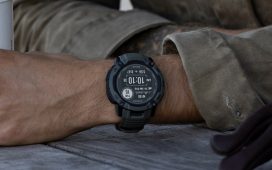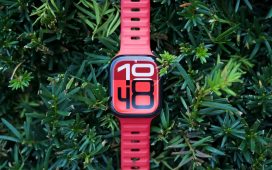
Apple AirPods 4 with ANC review: Noise cancellation for the masses
MSRP $179.00
Pros
- Surprisingly effective ANC
- Improved fit/comfort
- Solid sound quality
- Excellent voice/call quality
Cons
- Best for Apple device users
The Apple AirPods 4 with ANC are an entirely new product from Apple. They’re a departure from the previous entry-level AirPods, but not quite up at the level of the AirPods Pro (which, by the way, still remain in their second-generation status from 2022). And the awkward name has meaning because there actually are two versions of the AirPods 4. These, which include active noise cancellation, or ANC, and the base model that does not — and sheds $50 in the process.
We’re focusing on the ANC version here, and you’ll definitely see why. And we’re also going to take a look at whether you should consider shelling out another $70 for the AirPods Pro. And we’re also going to examine whether you should even consider these earbuds if you’re not also using an iPhone.
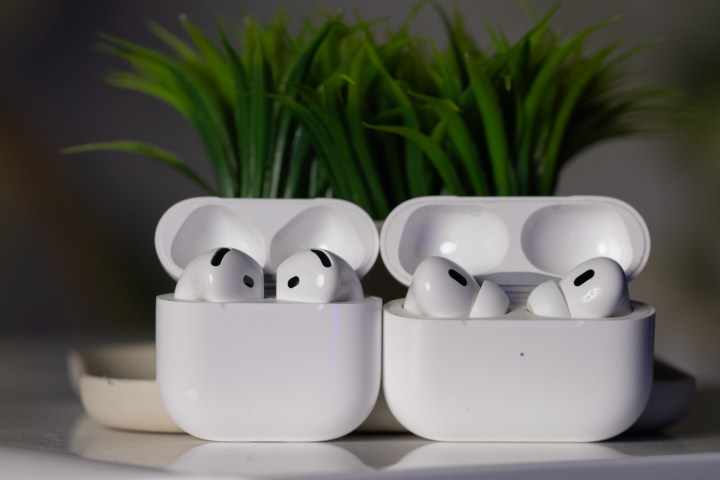
The most obvious and critical difference between standard AirPods earbuds and AirPods Pro earbuds is that standard AirPods don’t have a silicone or foam eartip to really seal in the sound (or to keep out what’s going on in the world around you).
Apple refers to this lack of an eartip design as an “open-ear design,” which could get confusing since there’s an entirely different kind of open-ear headphone design where nothing goes into your ear at all, like you see in our Shokz OpenRun Pro 2 review, or in or OpenFit Air review. But for the sake of simplicity, I’m going to use that open-ear term loosely to refer to these as having a “standard AirPods design.”
That lack of eartip has always been a pretty critical design point. On the plus side, you don’t have to worry about whether the eartips will fit into the opening of your ear canal. Also, a lot of folks find eartips really uncomfortable, so this open-ear design is their only realistic option. On the down side, not having an eartip sealing up your ear canal means that getting good audio quality is harder to achieve. And without the security of that eartip in place, the size and the shape of the earbud takes on all the responsibility of helping keep them in your ears (unless you add a “fin” or something).
It’s really tough to get one shape to work for everyone.
And that’s where things get tricky. This portion of the ear where open-ear earbuds sit is different on everyone. It’s really tough to get one shape to work for everyone. And that includes my ears, which are not your ears. What fits well for me might not fit well for you.
Apple says the AirPods 4 models required advanced modeling tools like photogrammetry and 3D laser topography to map thousands of ear shapes using over 50 million individual data points (that’s 5 million more than Google says it used for the Pixel Buds Pro 2, but that’s neither here nor there). And from that, Apple created what it believes is the most comfortable-to-wear shape of this earbud style. That’s a tall order.
Apple also says it changed just about everything about the acoustic architecture for these earbuds, from the little speaker driver inside, to its positioning and how it aims more directly into your ear than before. Apple even promises there are fewer internal sound reflections, which helps improve the sound quality. There’s also a new amp powering that speaker driver.
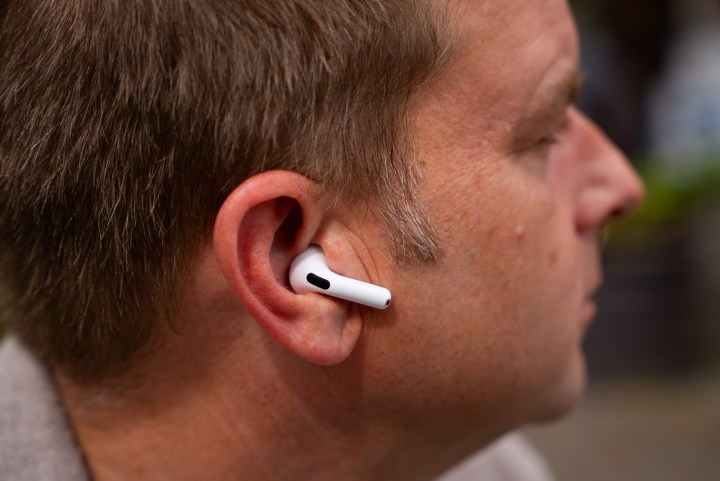
The AirPods 4 also get Apple’s H2 chip, which unlocks a lot of features not previously available, like personalized spatial audio, dynamic head tracking (which makes it seem like the sound is coming from a specific point in space), voice isolation (which eliminates background noise for clearer calls), and Siri interactions so you can nod or shake your head to answer or decline a call. They also get a new force sensor you can click.
Latency is meant to be lower, so there are fewer lip sync issues. You get all of that with either of the AirPods 4 models.
Note quite AirPods Pro
The AirPods 4 with ANC bring a lot more, though. And this is where they start to look a lot like the AirPods Pro, at least on paper.
Both models have a USB C charging case now, but the AirPods 4 with ANC have a find-my speaker built-in, and the case supports wireless charging. The case also has no back button. Instead, to reset or pair the AirPods with a non-apple device, you double-tap the hidden LED.
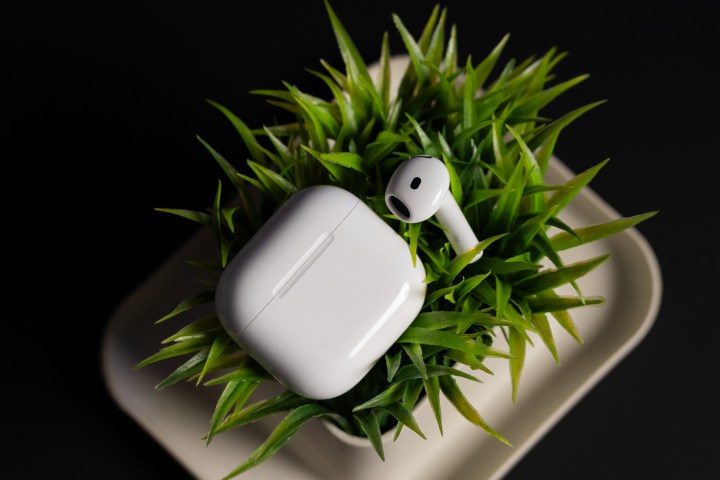
Battery life is a claimed 5 hours with the ANC off, and 4 hours with it on. With recharges from the case, you can get about 30 hours total without ANC, or 20 hours with ANC before having to plug anything in. My experience lines up with those claims.
Along with the active noise cancellation comes other expected features like transparency mode, adaptive audio, and conversation awareness. That’s all stuff found in the more expensive AirPods Pro.
Add all that up and it seems like the only real differences between the AirPods 4 with ANC and the AirPods Pro are that the Pro have an eartip that provides a seal in your ear and a force sensor that lets you swipe to adjust volume. Down the road, the AirPods Pro will also get some hearing aid features, too, but we’ll come back to that, along with how important having an eartip is for noise isolation and noise canceling.
For anyone who doesn’t like eartips or can’t get the AirPods Pro style of bud to fit, the AirPods 4 with ANC are going to be a godsend for air travel.
For now, let’s talk about how the AirPods 4 with ANC work on their own merits. But first we need to reiterate: Because the AirPods 4 with ANC are the open-ear design with no eartip, the experience is going to vary from user to user much more than the experience with the AirPods Pro. It’s acoustics and biology.
We’ll start with comfort. Apple has worked to make these buds as comfortable as possible for the widest range of ears possible. There’s no doubt they are significantly better than the previous generation of AirPods, which I didn’t much care for wearing.
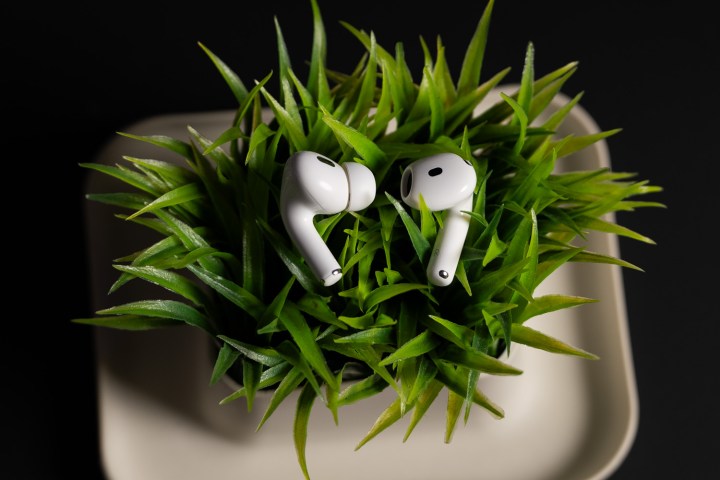
But there’s just no avoiding that some folks will experience pinch points ranging from barely existent to significant. Put me in the middle of that camp. I can wear the AirPods 4 roughly 2 to 2.5 hours before I feel a tinge of pressure. When I first put them in, I barely feel anything. After a couple of hours, I feel them. And by three hours, I want a rest. I take ’em out, put them in their charging case, and 15 minutes later not only have I added about one hour of playtime, but I can use them for another 2.5 to 3 hours.
I think for day-to-day use, this is fine. For a flight where you might want to wear them for 5 or more hours? It’s … fine. But I’d personally rather wear the AirPods Pro for long flights, at least in terms of comfort. But for anyone who doesn’t like eartips or can’t get the AirPods Pro style of bud to fit, the AirPods 4 with ANC are going to be a godsend for air travel.
Noise cancellation
Next, let’s talk about the noise cancellation because the ANC in these buds has a very dramatic influence on the perceived sound quality.
I was legitimately surprised at how effective the ANC was during a brief demonstration at the launch event at Apple Park. I wore the AirPods 4 with ANC during most of my flight home and I continued to be very impressed.
Using the ANC feature alone — with no other sound coming through — these open-ear earbuds did a remarkable job of quieting down the plane noise, just like they did in that Apple Park demo. When I played music, the plane noise was essentially inaudible. For an earbud that offers far inferior passive noise isolation compared to one with an eartip that seals up your ear, this is straight-up astounding.
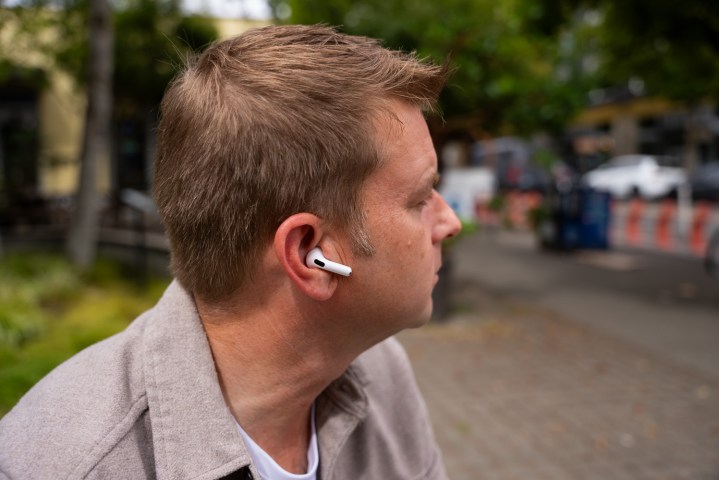
I did, however, feel a fair amount of sound pressure. This didn’t come from the cabin pressurizing — it came from the ANC in the earbuds. This is likely due to the fact that the open-ear design of the AirPods require that they crank out more sound that’s 180-degrees out of phase with the plane noise than an earbud with more passive noise isolation would have to put out.
Eventually, that pressure went away. I don’t know if the AirPods 4 with ANC adapted, or if I adapted. But eventually, it was a nonissue. Weird? Yeah. But I’ll take it.
But what about everyday noise? Like noisy annoying people around your workspace. Or a coffee shop. Or street noises.
High frequencies are quick to pierce what little barrier is provided by these buds.
Well, certain high frequencies do sneak in. There’s just no avoiding that. It’s the physics of the situation. There’s no seal to block them out, and high frequencies are quick to pierce what little barrier is provided by these buds.
So, there are these little anomalies. But, let me tell you about this walk I went on. I was walking down the street in a small business district listening to music at a pretty healthy volume, and I didn’t hear much of anything but the music, save for the nasal sound of some of the louder voices around me. Mostly, I didn’t hear the cars whizzing by. Only the whine of a big bus punched through.
What was more impressive was when I was walking through a residential neighborhood. I did hear the faint whiz of a weed-whacker. And when I paused the music, I could make it out clearly enough to know it was a weed-whacker. But I was shocked at how loud it actually was when I pulled the earbuds out.
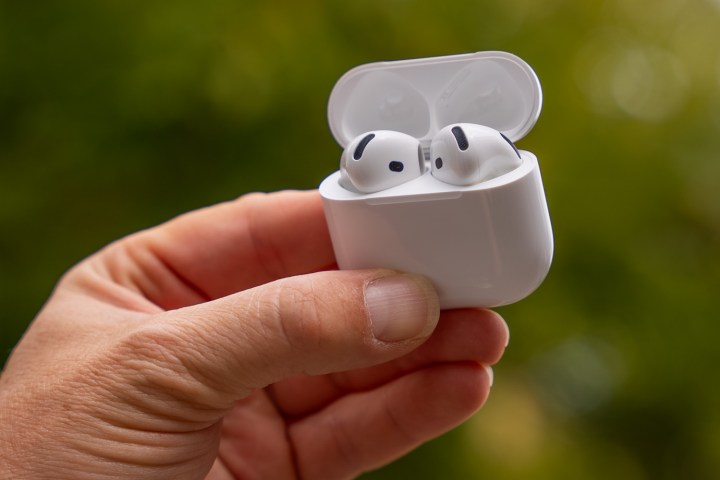
The same experience happened when I come upon a massive commercial wood chipper. From 50 yards away with music playing, I heard nothing. As I got closer, I could faintly hear the chipper chipping. When I stopped the music, I could very much hear it. But when I took the AirPods out? Again, I was shocked at how much of the sheer loudness of the wood chipper that the AirPods 4 were canceling out.
Not only do I think that you just can’t ask for more effective noise canceling from this kind of earbud design, but I’m frankly amazed at how effective it is.
The ANC in the AirPods Pro is more effective. There’s no debating that. They’re better at blocking high-frequency noise, and they are more effective at blocking out noise when no music is playing. I wear the AirPods Pro to bed sometimes to block out noises in the neighborhood, particularly in the morning when garbage trucks post up right outside my door. I don’t think I’d swap in the AirPods 4 with ANC for that job.
If you want the more effective noise-canceler, the AirPods Pro are it. They seal up your ear. But if you can’t do eartips? I don’t think there’s better noise-canceling available in an open design like this.
Audio quality
It’s a similar story with the audio fidelity. The AirPods 4 do sound better than the previous generation. And the AirPods 4 with ANC sound even better by nature of the fact that they so successfully remove outside sounds from the sonic canvas.
Their sound quality is going to please a massive audience. However, my fellow audiopiles should not waste breath balking. These AirPods 4 are not made for us. But I think anyone who hears these will have to respect they way they sound. They do indeed have prodigious bass with a significant amount of punch. And they have a lot of snap, too. I listened to some music with some really well-recorded congas and bongos, and timbales, and you could hear the snap and pop of the skins on those percussion instruments, right along with the punch of the kick drum.
There is no better ANC in an open-ear earbud.
Brass instruments had shimmer, shine, and grit. Saxes had some bite. Vocals were open, clear, uncongested. There was some occasional sharpness to sibilants — like when singers would hit a hard S. But it didn’t go too far. When an earbud is too sharp, you’ll hear it with the consonant T on a lot of recordings, and I didn’t get that.
Snap, shine, clarity, shimmer, punch, and richness. Yeah, I think the sound quality paired with the ANC performance, bundled with all the Apple-friendly features, definitely gets you your $179 worth. I’m just not aware of another product on the market that can do what these do.
What about non-Apple folks?
What if you aren’t an Apple user? What then? Would you want to use these with an Android device? I mean, you certainly can, right?
The AirPods 4 with ANC, like all the AirPods products, lose a lot of their luster when not paired with Apple devices. Most of the benefits beyond basic Bluetooth earbud functions go away. For most Android users, I think there are better options.
But one thing remains constant: There is no better ANC in an open-ear earbud. So, again, if you can’t do eartips, but want ANC — on iPhone or Android — I feel like the AirPods 4 with ANC are the option.



